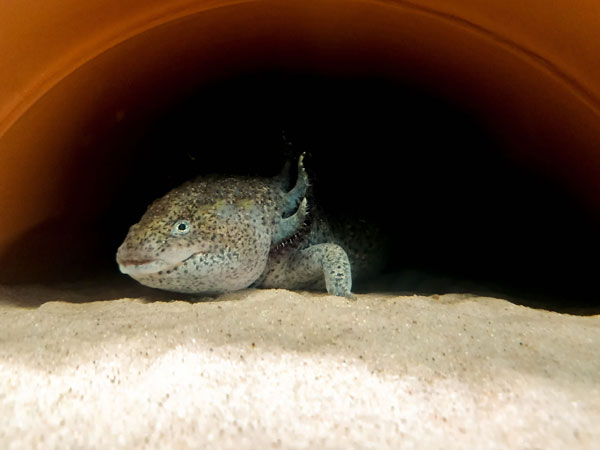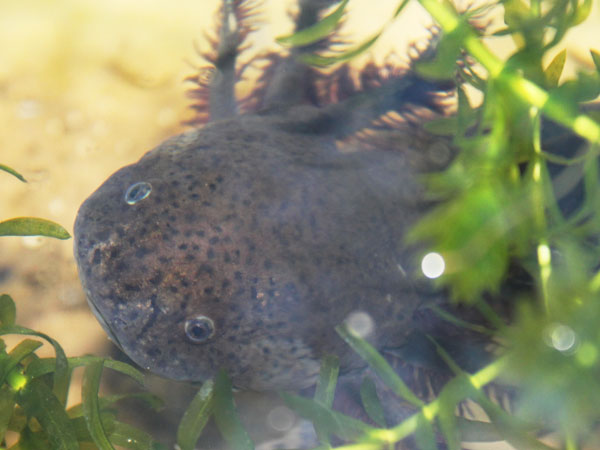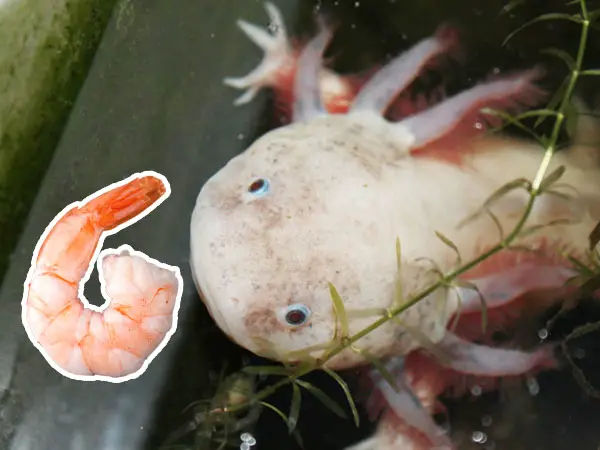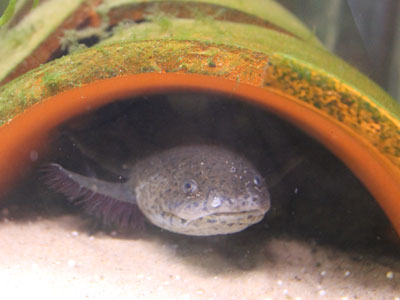If you’ve never had an Axolotl before but find the creature fascinating, you should prepare yourself for a different pet-keeping experience. It’s not to say that the Axolotl is difficult to keep and maintain. It’s just that it takes time for you to become accustomed to its behavior and requirements.

Some behaviors are peculiar and unique, while others are, fortunately, common among many different aquatic species. One of them is the hiding behavior that Axolotls will often display.
Do Axolotls Like to Hide?
There’s no way of telling whether Axolotls actually like the act of hiding, but they clearly do hide. Axolotls are rather clumsy carnivores, which is a weird combination, to begin with. They will display more activity during nighttime while keeping their energy levels low during daytime. It’s not uncommon to see them spending more time in hiding than in the open.
That being said, they are not overly shy, provided the habitat doesn’t force them to. Your Axolotl will move slowly during the day, spending most of its time in the same area and only moving if necessary. The amphibian’s hiding behavior isn’t a problem unless it becomes extreme.
Why is My New Axolotl Hiding?
If your new Axolotl is hiding, it’s most likely dealing with the new tank syndrome. This is a natural state for most aquatic (or otherwise) creatures being introduced into a new habitat. It takes time for them to accustom to their surroundings. It’s also common for the Axolotl to refrain from eating for a while for the same reasons.
Fortunately, this is a passing phase. Your Axolotl will get accustomed to its new habitat fairly fast, especially if there are a variety of hiding areas available. These will allow the Axolotl to feel more comfortable and secure in its enclosure.
Why is My Axolotl Hiding and Not Moving?
This is somewhat typical behavior for the most part. Axolotls are salamanders, after all, which explains their rather secretive and antisocial behavior, to call it that way. So, Axolotls aren’t too active and energetic, to begin with. They will remain in hiding for the most part and only come out to feed.
However, the hiding behavior isn’t always benign. If your Axolotl insists on remaining in hiding and doesn’t move much, it may have a health problem. Constipation is one of the possible culprits, so always check whether your Axolotl is bloated.
Stress is another cause, whether it’s due to environmental factors or new tank syndrome. Stressed Axolotls will prefer the safety and security of their hiding spot and refuse to go out. To prevent this problem, I suggest monitoring your Axolotl’s environmental parameters regularly.
Is It Normal for Axolotl to Hide All Day?
No, it’s not quite normal for your Axolotl to hide all day. If that happens, consider that there may be a problem with it. In many cases, it’s not something physical but psychological. The temperature may be off, or the lighting levels or water quality are suboptimal.
These problems will stress out the Axolotl, forcing it to remain in hiding to shield itself from the issue. But that’s not all. Axolotls have poor vision but great smell and hearing. So, intense activity in the room may actually cause your Axolotl discomfort.
Since this is a rather sensitive animal, I recommend moving the tank into a room with less traffic. If that was the problem, your Axolotl should resume its normal behavior shortly.
That being said, Axolotls are nocturnal creatures. So, it’s normal for them to avoid natural daylight and rest until night comes. This means you should expect your Axolotl to maintain a low profile during the day.
What Hiding Places do Axolotls Like?
The best hiding places for an Axolotl are those mimicking the animal’s natural hiding areas. These include hollow rocks, bark, caves, and anything else that can fulfill this role. You can also include hollow pipes or other decorations that accommodate the salamander.
Many people will resort to creative decorations like skulls, sinking ships, pirate chests, etc. While these are interesting and unique, bringing a distinct flavor to your aquatic setting, they may also be dangerous. Some of the issues to consider include:
- Tipping over – Axolotls will frequently come in and out of their hiding areas (for an Axolotl). If the hiding spot is imbalanced or not secured, it may tip over and hurt the Axolotl in the process. Always secure all your tank decorations to make sure your Axolotl doesn’t bump into them and tip them over or break them. This goes for plants as well.
- Causing injuries – Some decorations have sharp points or rugged edges that can cut or impale your Axolotl. The injuries may turn deadly, even if they’re superficial flesh or skin wounds. The problem is that these can get infected quite fast, with grim consequences for your amphibian pet.
- Poisoning the environment – Never use items as tank decorations if they weren’t made for that. I understand the appeal since it may sometimes be difficult to find the exact piece you envisioned for your aquatic habitat. But you also need to stay wary of the risks. Many materials are colored with toxic paints, unfit for underwater storage, or that may be imbued with noxious chemicals. Axolotls have very sensitive skins, so they will absorb these chemicals at dermal level. They don’t need to inhale them; a simple touch will do.
I would recommend getting rocks and aquatic decorations designed specifically for aquarium use since these are safe. Which is the most important aspect.
Conclusion
Axolotls are naturally low-energy amphibians that prefer to keep a low profile if possible. So, don’t panic if your Axolotl is often hiding during the day, especially since this is a nocturnal animal.
That being said, your Axolotl should become quite active during nighttime, when lights are off. If that doesn’t happen, investigate the situation more closely since that’s clearly uncharacteristic for your pet.




